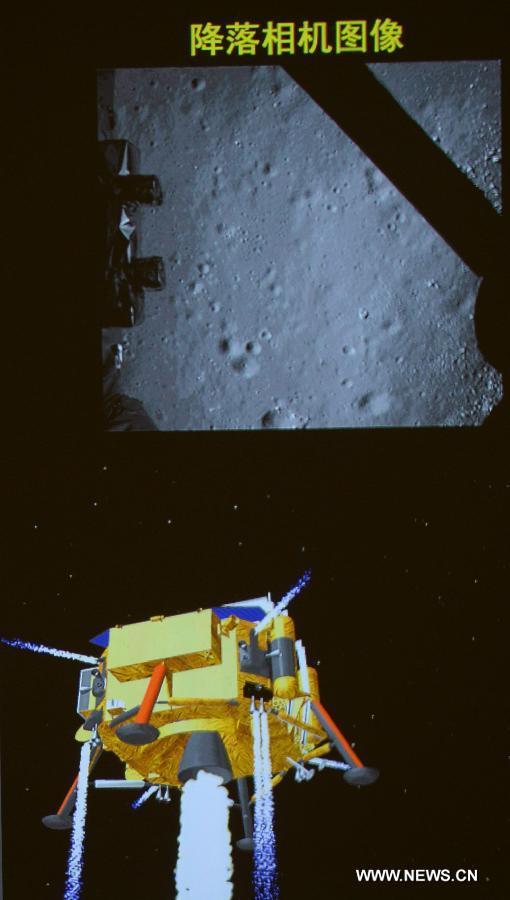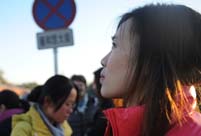 |
| China's lunar probe Chang'e-3, with the country's first moon rover onboard, landed on the moon, marking the first time that China has sent a spacecraft to soft land on the surface of an extraterrestrial body. (Xinhua/Li Xin) |
Chang’e-3 will fill in a blank in lunar research, and our landing technology is superior to that of other countries
Over 40 years ago, a US lunar probe first landed on moon. Doubts have been expressed that China’s lunar exploration is doing no more than following suit.
Ouyang Ziyuan, academician of Chinese Academy of Sciences and the first chief scientist of the Chang’e project, says that our lunar exploration is not a simple repetition, but a test of new space technology.
He explains that the exploration conducted by the US and other countries has mainly been centered on the equator area, and seldom in the high latitude areas. Chang’e-3 has been directed to the Sinus Iridum, which has never before been explored - a blank page in lunar research. In addition, we will carry out research that has not been done before, such as measuring the thickness of the surface layer of soil on the moon with instruments far more sensitive than those that were available in the 1970s.
According to Lin Yangting, researcher of the Institute of Geology and Geophysics, Chinese Academy of Science, China’s deep space exploration program has developed from a zero base, and will therefore take time to mature. In fact, Chang’e 1, 2 and 3 will incorporate many innovations, including those in the lunar probe such as the moon radar carried by Yutu rover, the extreme ultraviolet camera equipped in the lander, and the astronomical telescope based on the moon, all of which are world firsts. So we can expect great results in science and technology in the near future.
Yang Yuguang, researcher of the Second Academy of China Aerospace Science & Industry Corporation, said: “It is wrong to suggest that China’s lunar exploration technology is no more than imitation. For example, the US and other countries adopted a simple technique for their first soft landing on the moon: the moon probe enters the lunar trajectory, and where the trajectory meets the moon’s surface, the intersection point is the landing point. Applying reverse-thrust to the engine brings the probe down onto the surface. While straightforward, this is very resource-consuming. Our approach has been to circle the moon and then choose a spot to land. We will therefore have a wide range of choices. Finding a perfect landing spot is crucial, because the lunar probe is unmanned and the time at our disposal is very limited. So we employ advanced technology and instruments such as laser, microwave, and gamma shutdown sensors. Generally speaking, our lunar exploration techniques are both economical and reliable.
 Heavy cargo flights taking off
Heavy cargo flights taking off In pictures: PLA's digital equipment
In pictures: PLA's digital equipment  Americans mark Thanksgiving Day with parades
Americans mark Thanksgiving Day with parades Love searching stories in cities
Love searching stories in cities  Shanghai shrouded in heavy fog
Shanghai shrouded in heavy fog Office ladies receive ‘devil’ training in mud
Office ladies receive ‘devil’ training in mud Changes in Chinese dancing culture
Changes in Chinese dancing culture  Highlight of Mr Bodybuilding and Miss Bikini Contest
Highlight of Mr Bodybuilding and Miss Bikini Contest  Picturesque scenery of Huanglong, NW China
Picturesque scenery of Huanglong, NW China Naval escort fleet conducts replenishment
Naval escort fleet conducts replenishment 17th joint patrol of Mekong River to start
17th joint patrol of Mekong River to start The islands where immortals lived
The islands where immortals lived Snowstorms cause chaos for travelers
Snowstorms cause chaos for travelers Special police detachment of Hefei
Special police detachment of Hefei  Weekly Sports Photos
Weekly Sports PhotosDay|Week|Month